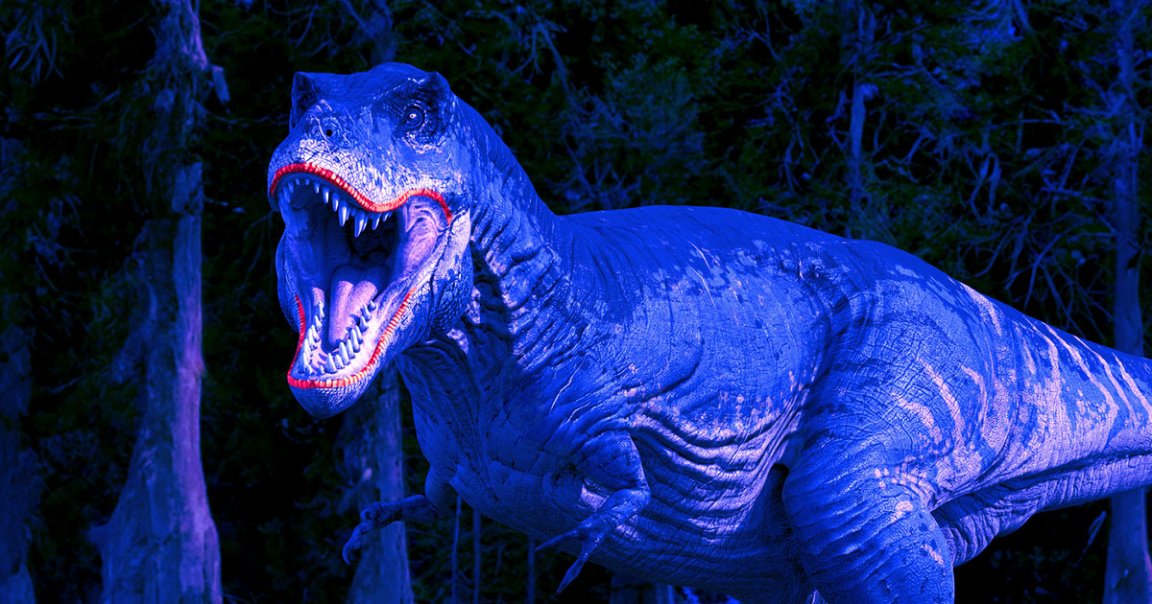
Toothless Grin
The iconic leer of the T-Rex may have been a lot less toothy than what Hollywood would have you believe — namely, those intimidating rows of chompers jutting out of its closed, menacing maw like a crocodile.
In reality, according to a new study published in the journal Science, the teeth of the T-Rex and other theropods like velociraptors would have been concealed by lips in the form of scaly tissue. This, the researchers write, would have made them look more like komodo dragons and less like the lizard king with an overbite you’ve seen in “Jurassic Park.”
“That animal has been copied so many times,” study coauthor Mark Witton, a paleoartist and researcher at the University of Portsmouth, told The New York Times. “It carried that lipless look into pop culture to the point where we’re now struggling to get rid of it.”
Dino Dentistry
But by “lips,” the researchers don’t mean in the mammalian sense, neither plump and prominent nor muscular and able to be moved independently. Instead, the dino-lips were more like a static sheath meant to protect its threatening teeth.
By studying tooth wear, Witton’s team found that modern, lipless animals like crocodiles had significantly more worn-down enamel — the outermost layer of teeth — compared to carnivorous theropods.
“As any dentist will tell you, saliva is important for maintaining the health of your teeth,” co-author Kirstin Brink, a paleontologist at the University of Manitoba, said in a statement. “Teeth that are not covered by lips risk drying out and can be subject to more damage during feeding or fighting, as we see in crocodiles, but not in dinosaurs.”
Another biting piece of evidence? Relative to the sizes of their skulls, dino teeth were no larger than lizard’s, indicating they were small enough to conceal.
Counterpoint
It’s a compelling case, but some scientists aren’t convinced that the pro-lip argument has, well, teeth.
Take Thomas Carr, a paleontologist at Carthage College and a recognized T-Rex expert, who argues that the study overestimates the enamel’s importance in having robust fangs. Dentin, which forms an interior layer of teeth, is more crucial, he maintains.
“That’s the tissue that I think is arguably structurally more important to a Tyrannosaur because if the dentin shatters, then they’ll be eating bananas,” Carr told the NYT.
Since dentin isn’t exposed to the elements, Carr added, there’s no need to keep it moist like with the enamel — and therefore no need for lips.
So for all of you desperately clinging onto the T-Rex’s fearsome but perennially less accurate depiction in “Jurassic Park” and other popular media over the years: there’s a chance it still kind of holds up.
More on dinosaurs: Scientists Found a Dinosaur’s Face, Complete With Its Skin